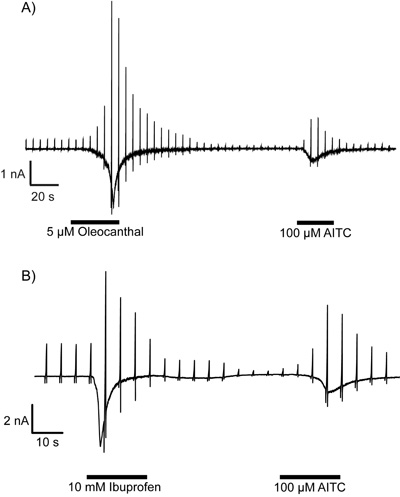Oleocanthal, a major phenolic compound in extra-virgin olive oil, elicits an unusual oral pungency sensed primarily in the throat. This contrasts with almost all other oral irritants, such as cinnamaldehyde, capsaicin and alcohol, which irritate mucus membranes throughout the oral cavity. Here we show that this rare irritation pattern is a consequence of both the specificity of oleocanthal for a single sensory receptor and the anatomical restriction of this sensory receptor to the pharynx, within the oral cavity. We demonstrated, in vitro, that oleocanthal selectively activates the hTRPA1 channel and that its ability to excite the trigeminal nervous system requires a functional TRPA1. Through human orosensory psychophysical studies and immunohistochemical analyses of human oral tissues, we showed that the anatomical distribution of TRPA1 in humans overlies the characteristic regional irritation elicited by oleocanthal. These findings provide an anatomical and molecular explanation for a distinctive orosensory phenomenon elicited by oleocanthal and commonly experienced in many extra-virgin olive oils.
Gachons C, Uchida K, Bryant B, Shima A, Sperry J, Dankulich-Nagrudny L, Tominaga M, Smith A, Beauchamp G, Breslin P
Unusual pungency from extra-virgin olive oil is due to restricted spatial expression of oleocanthal's receptor.
The Journal of Neuroscience 30. 999-1009 (2011)
Oleocanthal and ibuprofen activate TRPA1 channel
